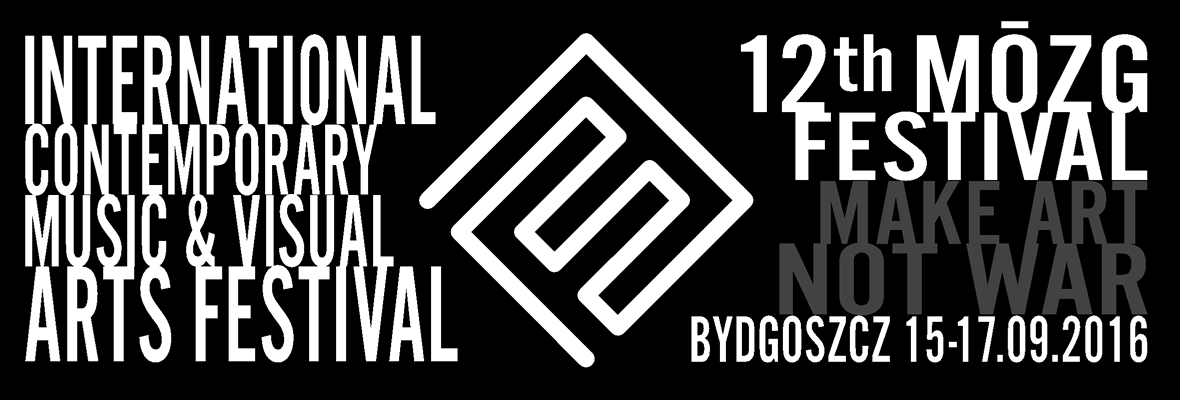
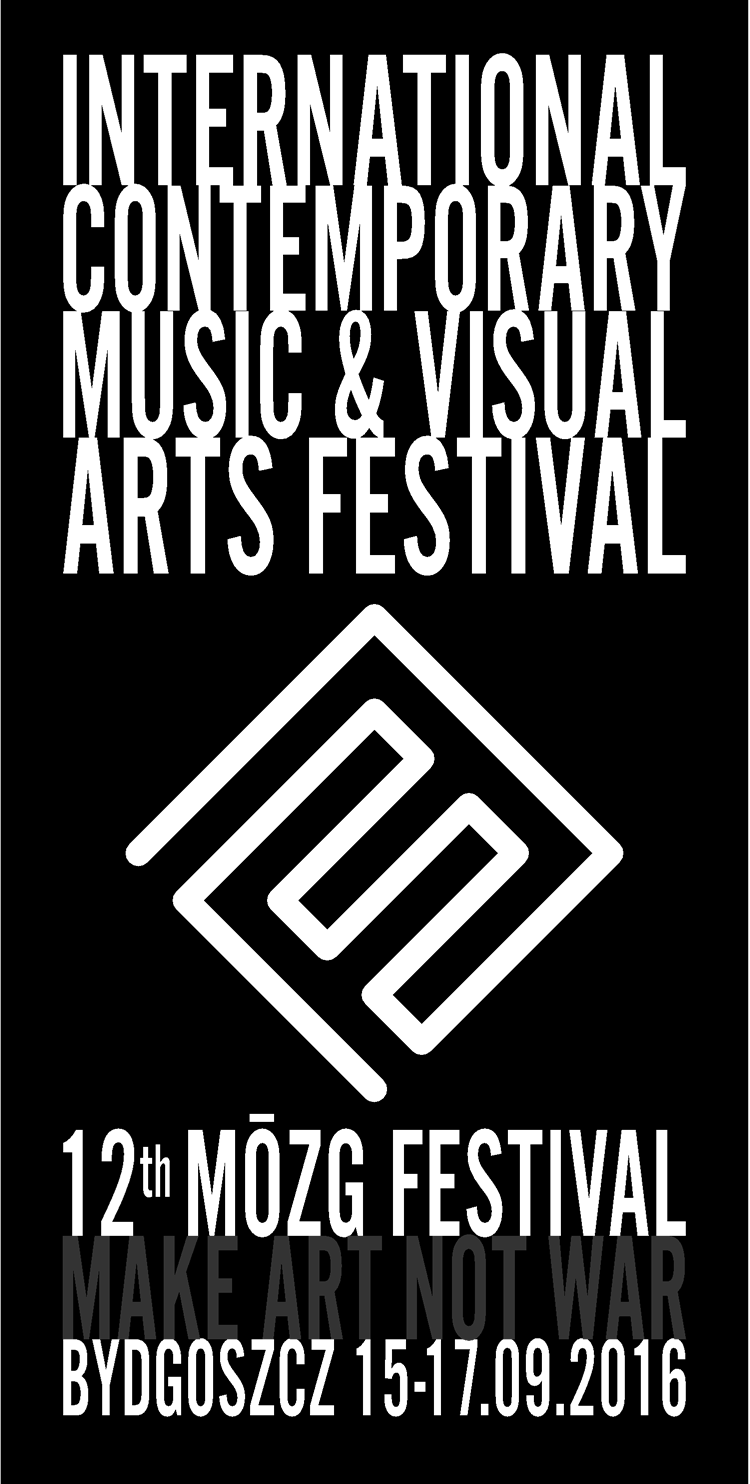


International Festival of Contemporary Music and Visual Arts „Mózg Festival” is an encounter of artists who work and create in all areas of contemporary music as well as performance art and multimedia installations where music plays an important part. Artists who participate in the festival come from all around the world. This reflects the multicultural principle of Mózg Festival and enables the audience to experience and understand different aspects of various cultures.
The festival presents the newest performance techniques and interdisciplinary combinations that relate to and honour tradition.
Among the invited artists there are outstanding characters from the artistic world as well as young artists, whose hitherto activity manifests uniqueness. We feel that an indispensable part of the festival is the participation of local artists who meet the above-mentioned expectations. All artistic activity is treated as means leading to deeper understanding of the surrounding reality and changes that occur in the world.
Relating to the current complicated socio-political state of the world and believing that art evokes good values and understanding in people, I suggested to the artists and the audience that this festival takes place under the heading “Make Art not War”. This year, the festival does not present any limits in terms of stylistics. The determinants of artist choice are: authenticity of presented art (original activity) and highest level of performance.
This festival’s programme was enriched with a film cycle “Films against war” and discussion panels with artists during which the following topics will be put forward: “Can art stop war and what is the artist’s role in the modern world?”
Professional audio and video archiving is also a part of the project.
12 Mózg Festival will take place on 15-17th September.
S.J.
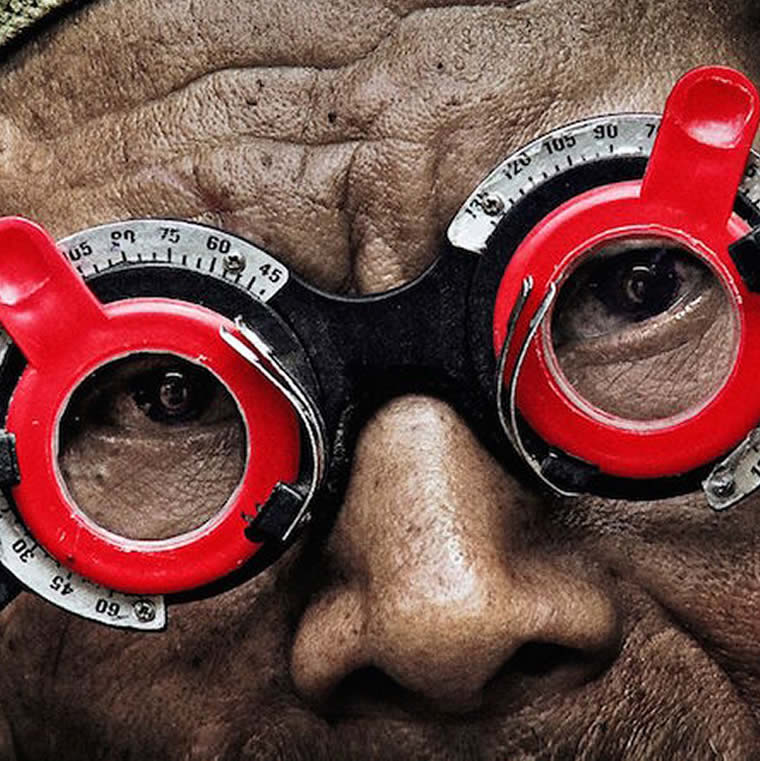
Jak to jest ocaleć ze zbrodni ludobójstwa dokonanej przez brygady śmierci w latach 60. XX wieku w Indonezji? Jakie to uczucie żyć u boku bezkarnych morderców swojego rodzonego brata? Adi Rukun, optyk w średnim wieku, zna odpowiedzi na te pytania. W końcu postanawia skonfrontować się z makabrycznymi czynami oprawców. Podczas badania wzroku proponuje im spojrzenie na przeszłość z innej perspektywy.
Reżyser Joshua Oppenheimer wzywa do przełamania ciszy zrodzonej z terroru.
Peter Jacquemyn is in two worlds, on one hand he is a musician, playing the bass, using voice, experimenting on different ways of playing together, combining music coming from different cultures. He is fascinated by a lot of non-western, so called ethnic music traditions; Asian music such as Korean Pansori-opera, Mongolian throat singing, Peking opera, Japanese Kabuki and Noh music, Papua pan-whistles. On the other hand he is also into visual arts, drawing, sculpture, installations, performance. Being in both worlds brought him to combine music and visuals on an equal level. Music is more than background; visuals are more than decor. Peter Jacquemyn tries to organize a dialogue, musicians behave like artists, visual artists try to work together like musicians do. Also movement, dance is now a part of his interdisciplinary work. This research resulted in experimental sound installations and performances such.
Wojtek Więckowski is a painter and multimedia artist. He combines playing music with exhibiting his visual works. In formal experiments he searches for relation between forms of expression used in creating music as well as in working on paintings. His solo concerts are accompanied by a projection based on his painted works. Apart from performing solo, he also plays with Warsaw Improvisers Orchestra, in duos with Jeff Gburek or Ray Dickaty and in a trio with Piotr Mełech and Filip Ramberg. He made his debut on the phonographic market with an album entitled “Slyde Guitar” released by MyMusic/Universal. In his music he combines a fascination with widely understood American folk music and avant-garde of 20th century, as well as ambient and improvised music. During the 12th Mózg Festival he will present his latest paintings in acrylic and monotyping on canvas.

Eric Chenaux is an adventurous guitarist, singer and composer based in Paris. Having been an active player in Toronto experimental music circles with a host of group and collaborative works, Chenaux has more recently amassed a body of solo work across five albums on the Constellation label, centring around his dextrous, fried guitar playing as juxtaposed with a gorgeously lyrical vocal style. An ingenious recombinant use of traditional folk, psychedelic pop and consort music in earlier albums has over time evolved into a wholly uncategorisable form of balladry, shot through with a singular vernacular of guitar improvisation.
Eric also composes and performs music for film and contemporary dance, and collaborates on numerous sound installations with visual/sound artist Marla Hlady.
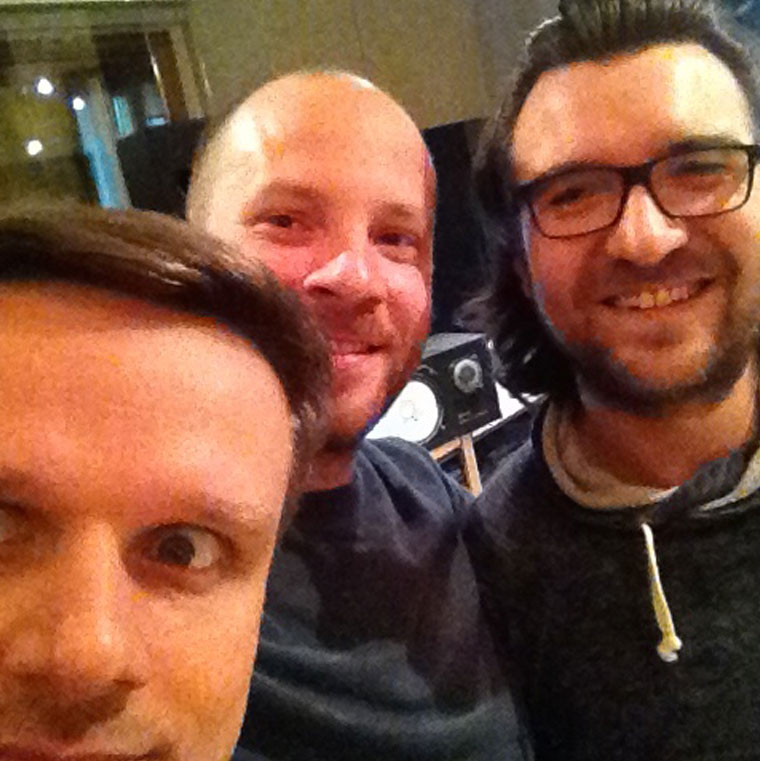
LAM consists of three individualists, who are related to Polish improvised arena, Even though none of them have a clear view on whether time is internalised in an entity or relative or objective, each one tries to expand it in their own musical way; Wacław Zimpel does it on clarinets, Krzysztof Dys by playing the piano and other keyboard instruments and Hubert Zemler uses drums.
LAM draws inspiration from the music of American minimalists, such as La Monte Young, Terry Riley or Steve Reich. In the repetitiveness and scarceness of forms of expression the band find a formula for the elusiveness of durance.
Wacław Zimpel - classically educated clarinettist and composer. He draws greatest inspiration from sacral and ritualistic music of different cultures. In his compositions he often refers to old-time composers to create peculiar and modern polemics or commentaries of musical tradition.
Hubert Zemler - a drummer, composer and improviser with classic education. With unique intuition he reaches for various rhythmic forms, which lets him feel perfectly comfortable in different music genres. In his projects, Zemler uses expanded instrumentation.He plays on metallophone, balaphone (an African marimba), gongs and many other percussion instruments from different parts of the world.
Krzysztof Dys - classically educated pianist and improviser. He is especially responsive to timbre and rhythm schemes and thanks to that he created his own unique improvisation language. His music is strongly influenced by Alexander Scriabin and Sergey Prokofiev.
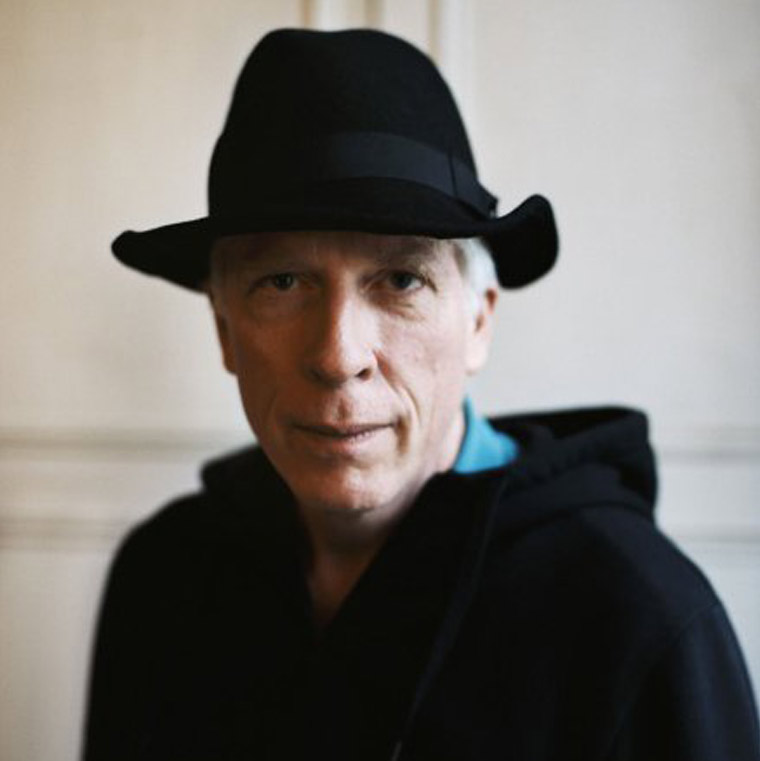
Rhys Chatham is a composer/performer from NY currently living in Paris. Having played in the groups of Tony Conrad and La Monte Young during the early seventies, his current projects include his orchestras of 100-200 electric guitars as well as his smaller Guitar Trio configuration. He plays trumpet, flutes and electric guitar going through a battery of delays in solo contexts as well as with other musicians including Charlemagne Palestine, z’ev, Le sacre bleu, and French improvisors Jean-François Pauvros and Jean-Marc Montera.
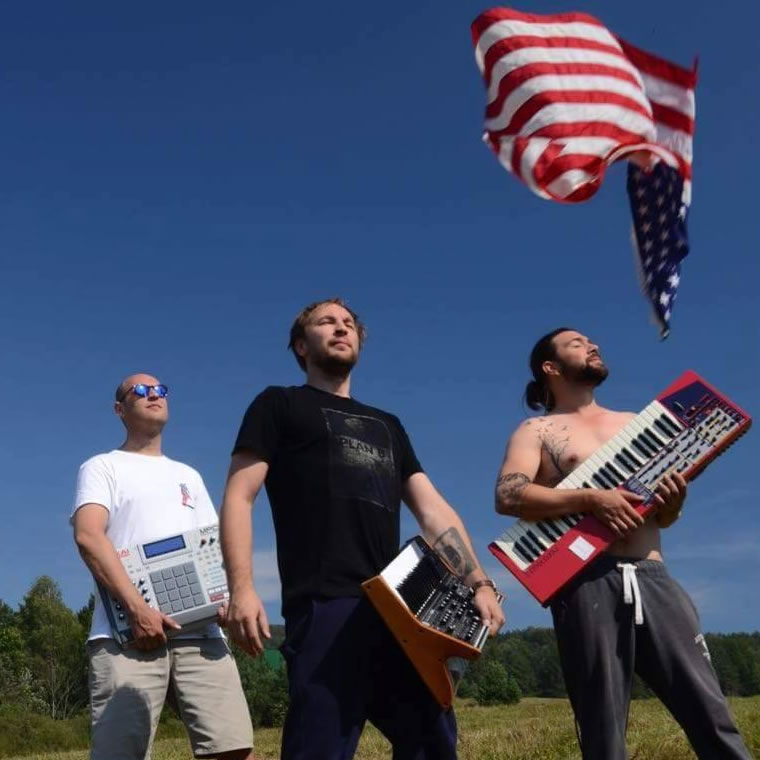
Xenony to elektroniczny projekt Piotrka Bukowskiego (założyciela zespołów Hokei i Stwory). Płyta „Xe” to naiwne i fantazyjne spojrzenie na lata spędzone przy domowym komputerze Atari, przy filmach na VHS czy na niekończących się spacerach z walkmanem. Xenony to osobista laurka dla tamtych czasów.
Bukowski – electronics
Koszniec (Komora A) – electronics
Bebech (Duży Jack, Stwory) – electronics
Agnieszka (Longstory) – vhs viz.

Pełna paradoksów i niezwykle odważna komedia, w której Charlie Chaplin postanowił zabawić się swoim scenicznym wizerunkiem, by przestrzec świat przed skutkami totalitaryzmu.
Tym razem niezdarny Charlie Włóczęga jako żydowski fryzjer okaże się łudząco podobny do pewnego charyzmatycznego dyktatora, który jest tak wszechmocny, że ze strachu przed samym sobą musi trzymać się zasłony. Choć fryzjer i dyktator są kompletnie identyczni, tylko jeden z nich może stracić życie za to, że jest Żydem i brunetem. Jednak seria przypadków i pomyłek sprawi, że pewnego dnia role się odwrócą …
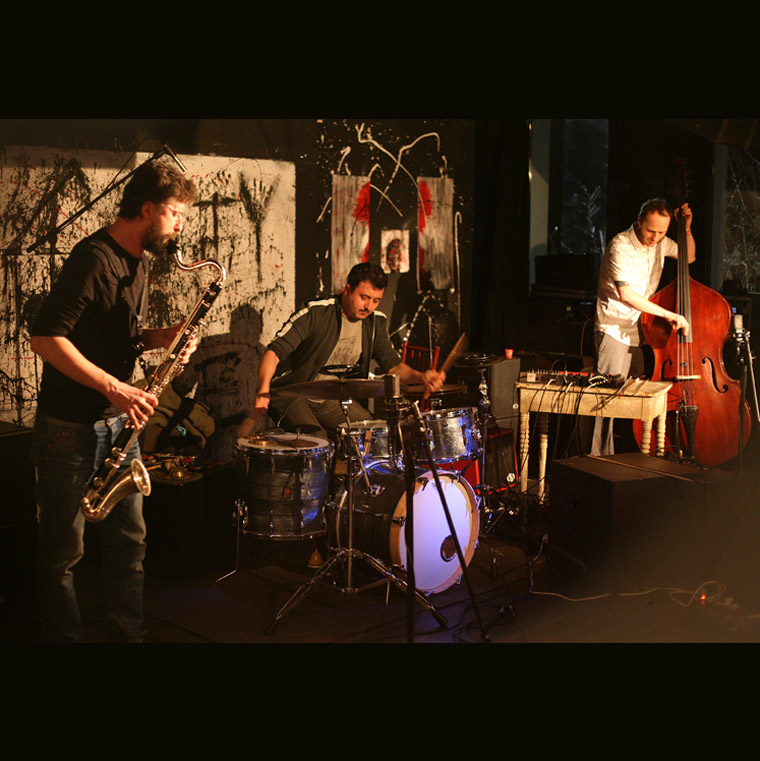
The trio, created by Jacek Mazurkiewicz in 2015, presents very organic improvised music, which is a combination of different styles. You can hear elements of modern chamber music or free jazz as well as electronic and folk music.
Piotr Mełech is a versatile clarinettist, composer and an active musician on the improvse arena in Poznań. He often refers to jazz tradition as well as European avant-garde and free improve.
Jacek Mazurkiewicz makes music based on emotional impressions and pulse. He combines acoustic and electronic music and continuously searches for new sounds. He is a sound editor, composer and he also produces music for films and theatre pieces. He runs sound and music workshops.
Vasco Trilla is a drummer and improviser from Barcelona. He started playing the drums at the age of nineteen. Initially, he focused on progressive rock and metal, later on he got interested in Indian and African music, jazz and casual improvisation. He creates music of different genres, starting from pop through free jazz to death metal. Currently, he uses unconventional drums playing techniques and his active on the free-improv arena.
Piotr Mełech – clarinets, electronics
Jacek Mazurkiewicz – double bass, electronics
Vasco Trilla [Spain] – drums
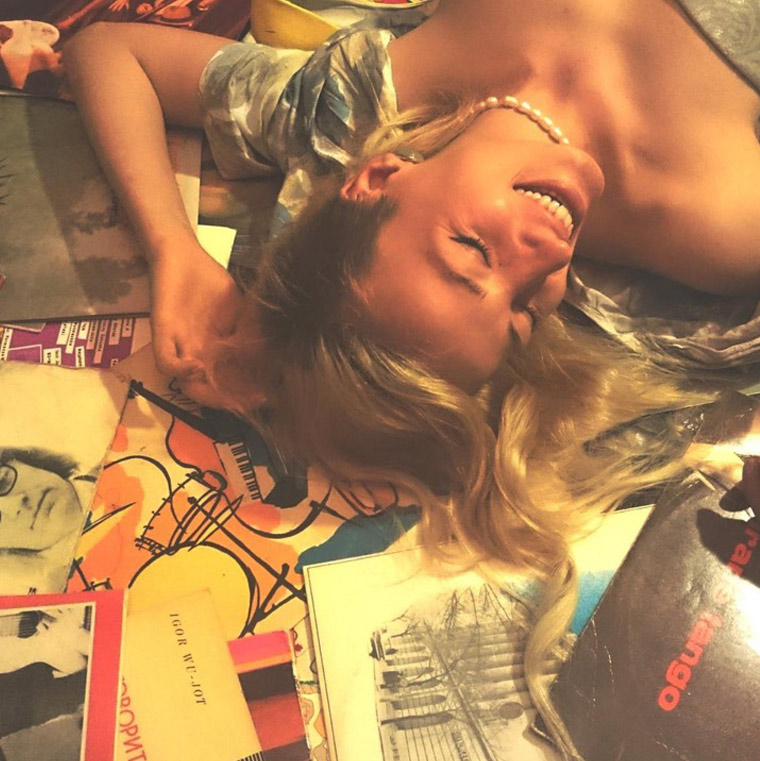
Hania Piosik is one of the most recognisable female vocalists from representing the Warsaw new wave. Her characteristic timbre, imagination and talent turn every concert into a metaphysical phenomenon. Working with various musicians, she presents her own, often very personal, means of expression in extremely different styles. She has just released the second album with JOY POP project, which can be heard on the biggest radio stations in Poland. She never cuts away form the sources of inspiration and she travels on different grounds; she co-creates Warsaw Improvisers Orchestra, she is working on a debut album of the project Rumianek and is working on material with Qba Janicki, a multi-instrumentalist from Bydgoszcz and two musicians from Warsaw – Patryk Zakrocki and Paweł Szamburski.
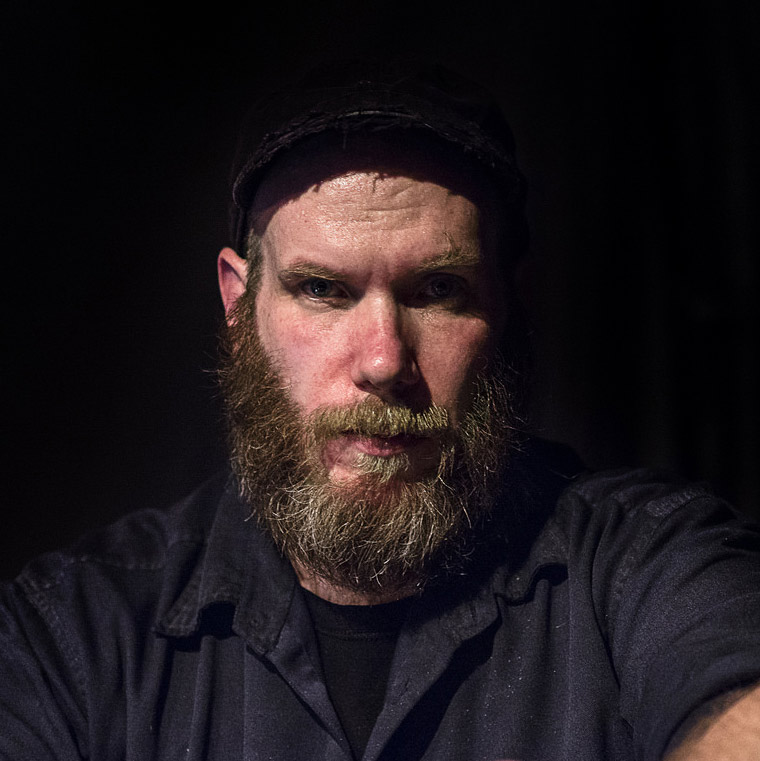
Kevin Drumm emerging from the city's improvised music scene, in the 1990s became one of the world's pre-eminent prepared guitar players. Since then his work has expanded to include electroacoustic compositions and live electronic music made with laptop computers and analogue modular synthesizers. His early recordings contain mostly sparse, quiet sounds; recent works have been more loud and dense.
Drumm has collaborated with many artists working in similar fields, including Japanese guitarist Taku Sugimoto, multi-instrumentalist and producer Jim O'Rourke, and many European improvisers such as Swedish saxophonist Mats Gustafsson German trumpeter Axel Dörner and P16.D4's Ralf Wehowsky. He has also worked with the artist group Simparch, composing a piece for their installation Spec, shown at Documenta XI in Kassel, Germany and at the Renaissance Society in Chicago.
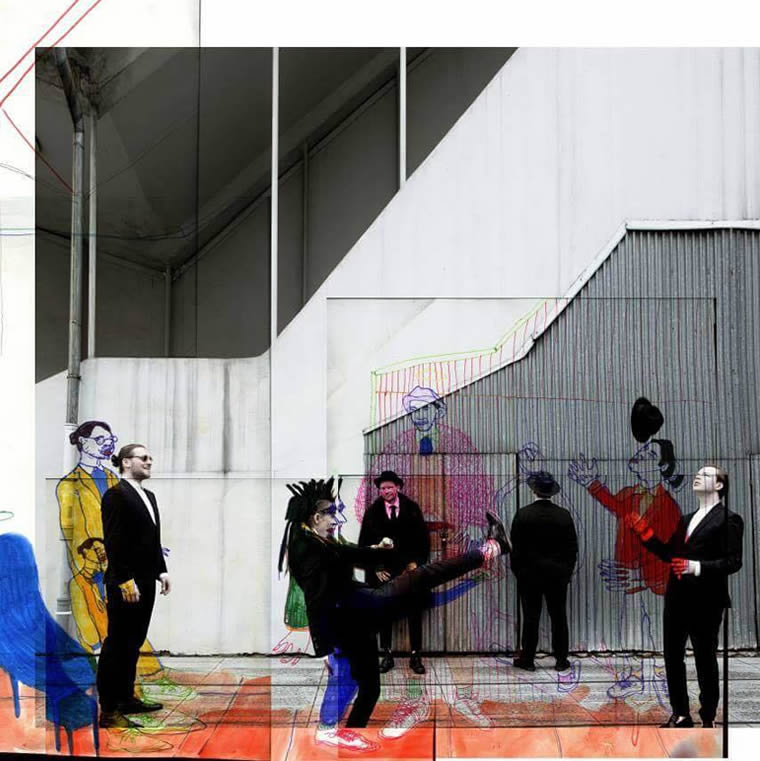
During the 12th Mózg Festival Wojtek Mazolewski Quintet will play a special concert entitled the New Brainwave.
The music of Wojtek Mazolewski brilliantly combines traditional jazz with numerous currents of contemporary music (punk, rock, electronics and others). The New Brain Wave is a tribute not only to La Nouvelle Vague in the cinematography but also the New Wave in music. Starting with bands gathered around CBGB club through the UK arena to the alternative arena in Poland’s Tricity - all of them went far beyond the accepted frames.
You can hear the echo of the sound of the 60’s - revolt, contestation and the enthusiasm of May 68’. The causal construction and musical freedom, which gives the direction in Mazolewski’s works, are sourced in the phenomenon of the New Wave.
Anyone, who has had a chance to hear Wojtek Mazolewski Quntet play, does not have to think twice to understand why it is one of the bands that plays most often in Poland and abroad. The last studio album of the quintet entitled „Polka” has achieved „gold” status in Poland. However, the true power of the WMQ’s music can be heard during the encounters with the audience that are always packed with emotion.
Oskar Torok – trumpet
Marek Pospieszalski – saxophone
Miłosz Oleniecki – keyboard instruments
Qba Janicki – drums
Wojtek Mazolewski – double bass
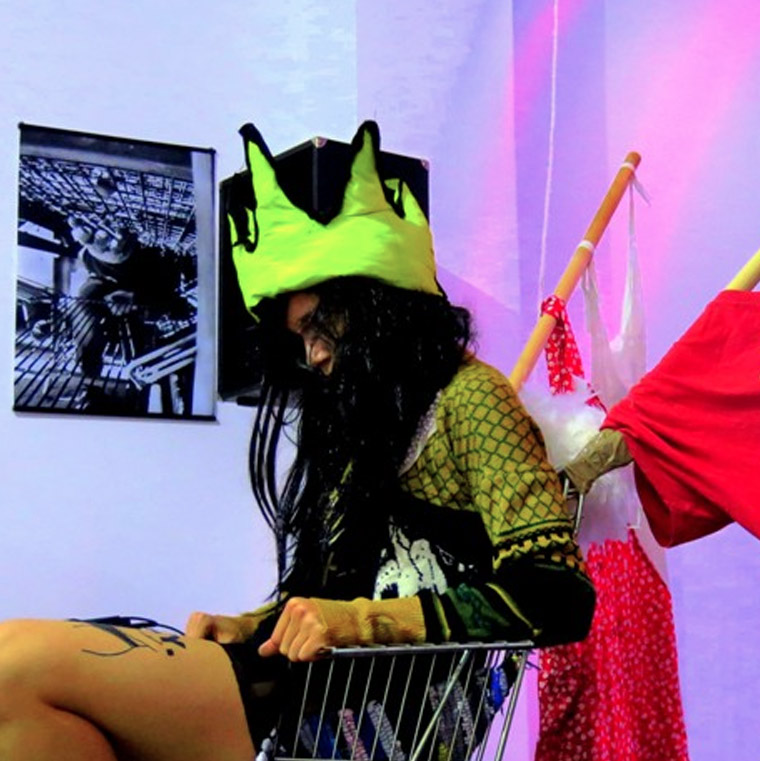
SIKSA is an intriguing combination of critical art, modern literature and punk energy. The duet, was created in the middle of 2014, during what you would call a “performance” will destroy everything you understand by this limited word. In fact, SIKSA is just vocal and bass; or as much as vocal and bass. Limited instrumentation stands in contrast with the vocalist’s OVERexpression, elements of monodrama, controversial narration and extravagant costumes. Spiked with common language texts written by Alex Dudczak bring up uncomfortable feminist, political and social issues and are also filled with surprising humour, pretentious references to pop culture and everyday life. SIKSA romps around punk parties, modern art galleries and literary or theatre parties. They are not afraid to play in clubs, outdoors, in squats or private houses.
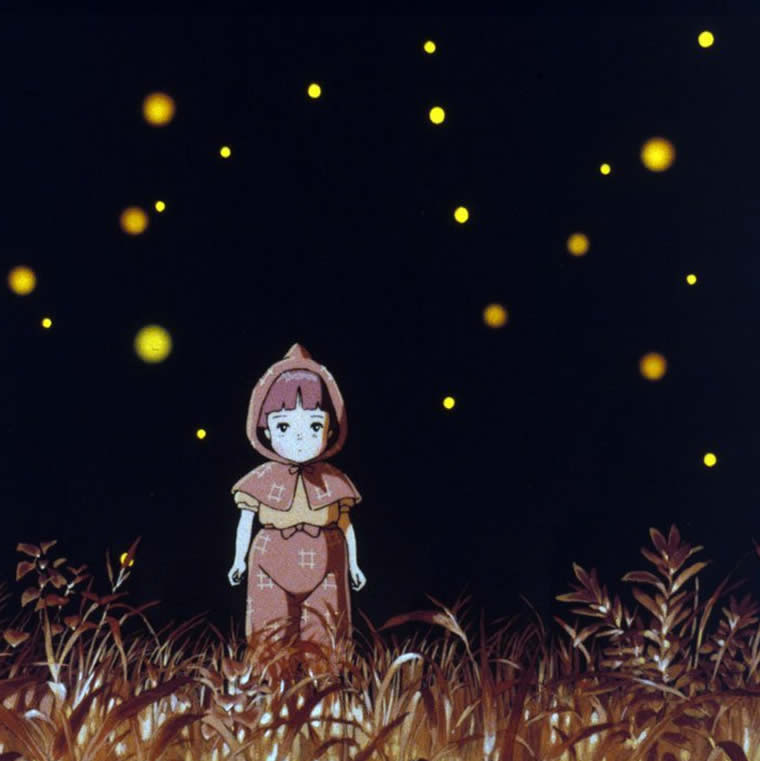
Od lat obecny w czołówkach rankingów najlepszych filmów w historii kina „Grobowiec świetlików” jest niezwykłym osiągnięciem japońskiej animacji. Roger Ebert zaliczył go do 300 najlepszych filmów na świecie, na liście IMDb został zakwalifikowany na pozycji 98, w topce magazynu TimeOut powstałej przy udziale Terry’ego Gilliama zajął 12 miejsce. Co do jego wysokiej wartości zgodni byli krytycy Empire, Total Film i recenzenci wymienieni przez serwis RottenTomatoes. Rozpowszechniany wspólnie z dziecięcą mangą z obawy, że nie trafi samodzielnie do szerokiej dystrybucji, stanowił zaskoczenie dla publiczności. W baśniowym świecie narysowanym delikatną kreską Studia Ghibli ukryty jest wojenny dramat dwójki bohaterów, nastoletniego Seity i jego czteroletniej siostry Setsuko, próbujących po utracie rodziców przeżyć we wstrząsanej wojną Japonii. Podążając za rodzeństwem coraz trudniejszą ścieżką film stawia pytanie o granice współczucia i wrażliwość na drugiego człowieka w czasach zagłady.
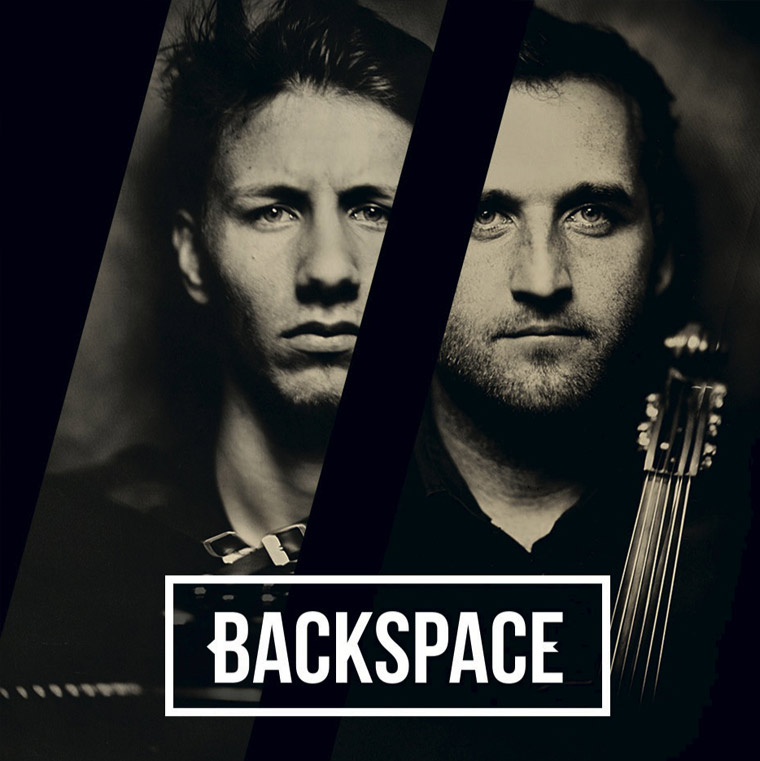
BACKSPACE is one of the most original groups on the Polish improvised music arena. The musicians successfully combine the acoustic sound of the accordion with electric violin and the possibilities of modern technology. The dialogue, interaction, improvisation, live sampling and creative use of computer software, electronic effects and even objects of everyday use enabled the creation of unique sound and extraordinary musical language of the band. Their music is influenced by symphonic music as well as minimalism, “tintinnabuli”, Nordic new jazz, ambient, electro and house. They duo draws inspirations from nature, cities, machines, humans, places, views, experiences, memories, uniqueness and everyday life, aboriginal music, German techno scene or abstract expressionism.
Zbyszek Chojnacki – accordion, electronics
Łukasz Czekała – electric violin, electronics
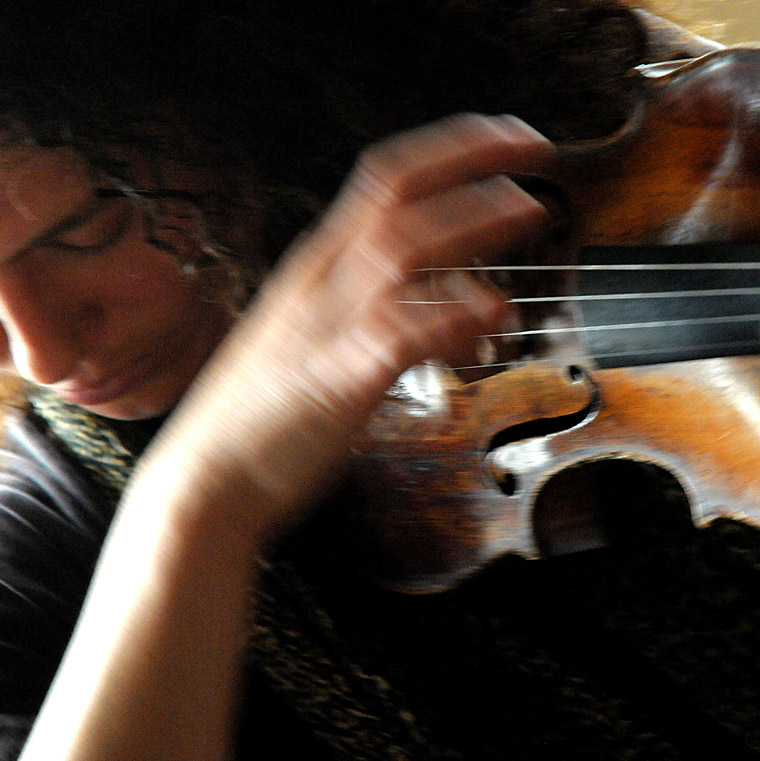
Biliana Voutchkova is a dedicated, thoroughly engaged composer-performer whose work combines regular performances of major solo violin/ensemble works, new works by contemporary composers often written for her and improvisation. Her constant research as a creative improviser spans the widest possible range of sound/music/movement and extends the sonic and technical capacities of her instrument evolving into the development of a highly individual musical language. Biliana lives in Berlin and regularly appears at festivals and concert series worldwide.
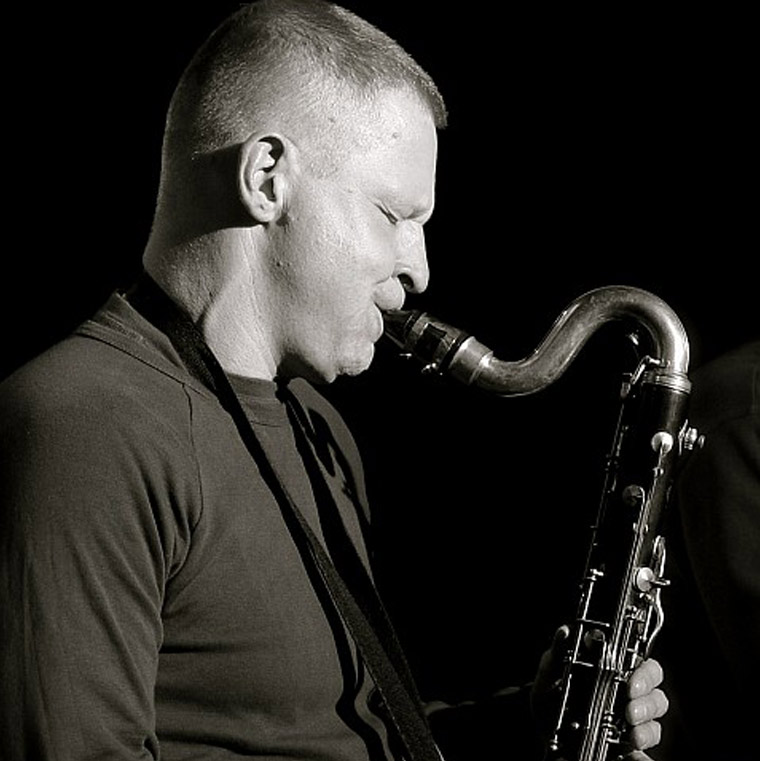
Mikołaj Trzaska is a saxophone and clarinet player as well as a composer. He studied at the Department of Painting and Multimedia at the Academy of Fine Arts in Gdańsk. Musically, he grew up on yass - a socio-artistic movement at the turn of 80’s and 90’s that rose against the brassbound of Polish jazz environment. He was the co-founder of the legendary yass band Miłość and the leader of equally creative Łoskot. After the yass period, he recorded a few focused and quiet albums with the Oleś brothers. He accompanied poets (Świetlicki, Andruchowycz), he creates projects combining music and literature with Andrzej Stasiuk, and he composes music for Wojciech Smarzowski’s films (Kuracja, Dom Zły, Róża and Drogówka). Jewish music became a permanent element of his works a few years ago. He mostly creates in the area of radical modern free jazz.
Evan Parker began to play the saxophone at the age of 14. Initially he played alto; by 1960 he had switched to tenor and soprano. In 1962 he went to Birmingham University to study botany but a trip to New York prompted a change of mind. Parker is best known for his solo soprano saxophone music, a singular body of work that in recent years has centred around his continuing exploration of techniques such as circular breathing, split tonguing, overblowing, multiphonics and cross-pattern fingering. These are technical devices, yet Parker's use of them is, he says, less analytical than intuitive; he has likened performing his solo work to entering a kind of trance-state. The resulting music is certainly hypnotic, an uninterrupted flow of snaky, densely-textured sound that Parker has described as „the illusion of polyphony”.
Matt Wright is a composer, turntablist and sonic artist born in 1977 in Norwich, UK. His works are at the edges of concert and club culture, his output stretching from scores for early music ensembles and contemporary chamber groups to digital improvisation, experimental hip hop and turntablism, website installations, and large events combining DJs, new music performers and digital media. As a performer and researcher he works with turntables, laptops and surround sound installations to create post-DJ, multichannel music that embraces hip hop, avant garde and 'free' traditions. Matt is a Professor of Composition and Sonic Art at Canterbury Christ Church University, where he is also the Director of Research for the School of Music and Performing Arts.
Peter Jacquemyn is in two worlds, on one hand he is a musician, playing the bass, using voice, experimenting on different ways of playing together, combining music coming from different cultures. He is fascinated by a lot of non-western, so called ethnic music traditions; Asian music such as Korean Pansori-opera, Mongolian throat singing, Peking opera, Japanese Kabuki and Noh music, Papua pan-whistles. On the other hand he is also into visual arts, drawing, sculpture, installations, performance. Being in both worlds brought him to combine music and visuals on an equal level. Music is more than background; visuals are more than decor. Peter Jacquemyn tries to organize a dialogue, musicians behave like artists, visual artists try to work together like musicians do. Also movement, dance is now a part of his interdisciplinary work. This research resulted in experimental sound installations and performances such.

Jacek Sienkiewicz is one of the most valued creators of electronic music in Poland. He has also been our country’s musical representative abroad. He regularly plays in clubs all around the globe. He also performed at the most important electronic music festivals and his records can be found in every respected music shop. Last year, Sienkiewicz surprised his fans by recording a common album “Instynkt” signed by his label Recognition and Bocian. Music of this release confronts the listeners with difficult to classify and mysterious form. For the first time, Sienkiewicz gave up his characteristic ornamental rhythm inspired by minimal music or repetitive, pulsatory blocks of a ambient in favour of varied sounds and tones. In June 2016 he unexpectedly released another album entitled „Hideland”.
15.09.2016
concerts at MÓZG - 15 zł
16.09.2016
concerts in CITY CULTURAL CENTRE (MCK) - 50 zł
night concert at MÓZG free
17.09.2016
concerts at MÓZG - 15 zł
Tickets available at MÓZG since August 15th
Presale: office@mozg.art.pl
Film screenings, discussions as well as workshops and lectures - free admission